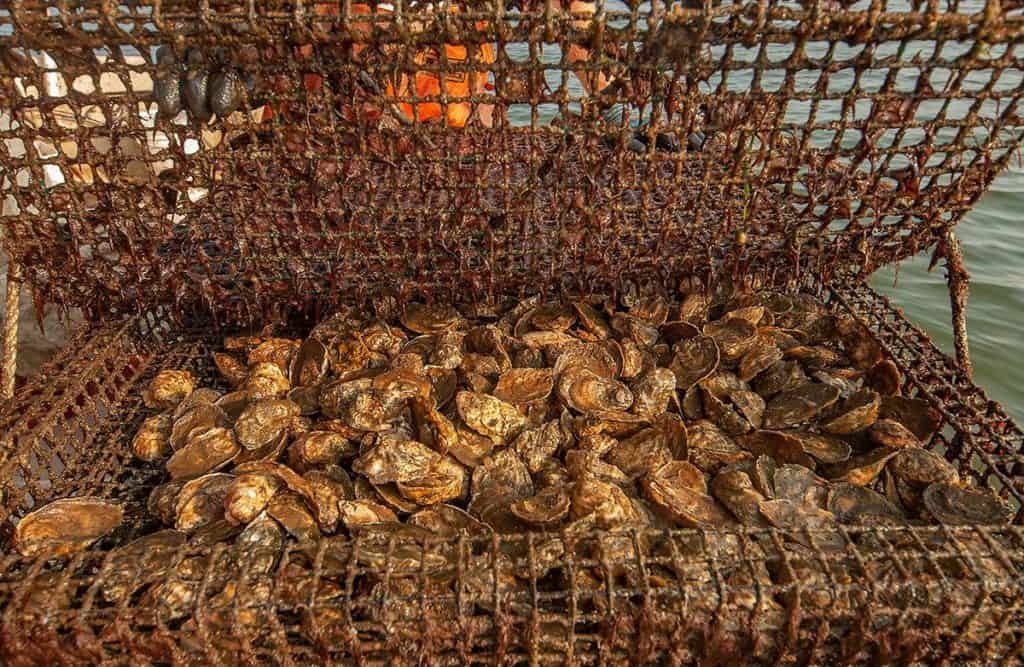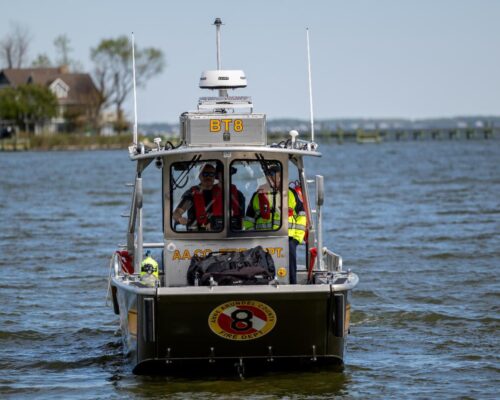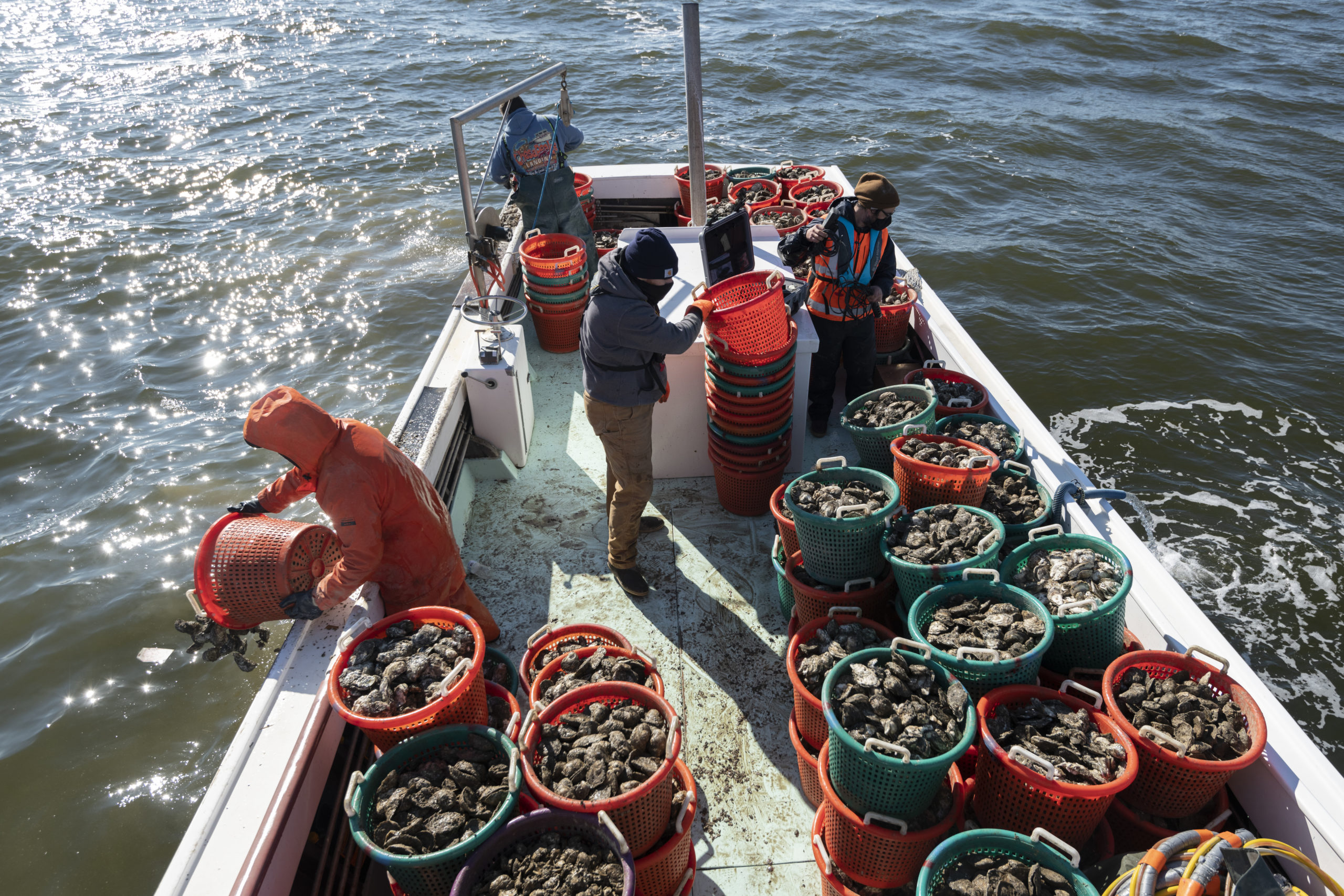By Jeremy Cox, Bay Journal News Service
When Bruce Vogt launched his oyster farm a decade ago, he opted to raise his bivalves in a creek near the mouth of the York River because of its exceptionally clean water. But he worries that an invisible change in those waters will someday destroy his livelihood.
It’s a threat facing waters around the world: acidification.
“The possibility of it coming in the future is real,” said Vogt, owner of Big Island Aquaculture in Gloucester, Va. “I don’t think we’re in imminent danger, but if we don’t start now, we might find ourselves with high mortality and dead oysters.”
Scientists at the Virginia Institute of Marine Science (VIMS) have just begun a three-year, $1 million research project that seeks to show how acidification—a consequence of climate change—will impact the Chesapeake Bay’s famous oyster industry.
They hope to emerge with a computer model, depicting where and when water conditions will become unfavorable for supporting oyster growth. The results will have wide-ranging implications for oyster farmers and watermen as well as state and federal officials who oversee the 10 oyster restoration initiatives around the Bay, said Emily Rivest, one of the study’s lead investigators.
“It’s not a threshold in the sense of ‘This is when all the oysters are going to die,’” said Rivest, an expert in marine life physiology. “It’s more of ‘What is the biological transition that is meaningful for this group of people whose livelihoods depend on oysters?’”
Oceans absorb about 30 percent of the carbon dioxide emitted into the atmosphere, according to the National Oceanic and Atmospheric Administration. There, it triggers a chemical reaction that lowers the water’s pH and raises its acidity. Since the Industrial Revolution of the 1700s and 1800s, when carbon releases began escalating, the pH of the world’s oceans has fallen by 0.1 units, the equivalent of a 30 percent jump in acidity, researchers say.
If little or no action is taken to reduce emissions, the ocean’s acidity is expected to climb another 100–200 percent by 2100, according to the Intergovernmental Panel on Climate Change.
Higher acidity can harm oysters by robbing the water of the carbonate ions they need to make new shell material. The corrosive water can also dissolve their existing shells in the same way that soda, another acidic liquid, eats away at the enamel of human teeth.
Studies show that ocean acidification leads to slower shell growth, reduced shell weight, weakened immune systems and lower water-filtration capacity. Oyster larvae and juveniles are particularly vulnerable to the changes.
Some parts of the world are already feeling the effects. In the Pacific Northwest, oyster die-offs have numbered in the billions since they began in 2005. The region is believed to be experiencing acidification earlier than other places because of rising water temperatures in the region and water upwelling, which pushes acidic water to the surface.
The Chesapeake Bay’s oysters aren’t in immediate danger, partly because they evolved differently than their West Coast counterparts, Rivest said.
“Chesapeake Bay oysters are really resilient. They are very tolerant of extreme water conditions because they’ve evolved in this really dynamic coastal estuary,” she said. “But we do need to get our act together” to reduce greenhouse gas emissions before the damage sets in, Rivest added.
Some oyster farmers may be able to adapt and survive the changes to the water chemistry. Others may not.
One of the goals of the VIMS project, which is funded by NOAA, is to identify which factors will contribute to that success or failure. Researchers will also interview aquaculture operators and watermen to learn how much financial distress they can withstand before choosing to get out of the business.
Vogt said the West Coast’s acidification woes were a wake-up call for many oyster farmers on the East Coast. It happens all too often that when oysters get sick or die in Chesapeake aquaculture operations, the cause is shrouded in mystery, he said.
“It would be nice to get more specific information than, ‘Well, something stressed them,’” Vogt said. “My question is, ‘What stressed them?’”
Location could play a huge role. Alkalinity, the ability of water to neutralize acid, varies dramatically among the Bay’s rivers and streams—by as much as a factor of six, according to a 2019 study led by Penn State researchers.
Much of the VIMS work will involve combining two existing computer models created by VIMS—an ocean acidification model and an oyster population model—into one, said Marjy Friedrichs, the VIMS researcher leading the study with Rivest. Right now, scientists can’t predict how long it will take for the Chesapeake’s oysters to start showing signs of stress.
“Is it going to be in 2030, 2050 or in the end of the century?” Friedrichs asked. “We’re hoping this will be really useful for the aquaculture industry.”




